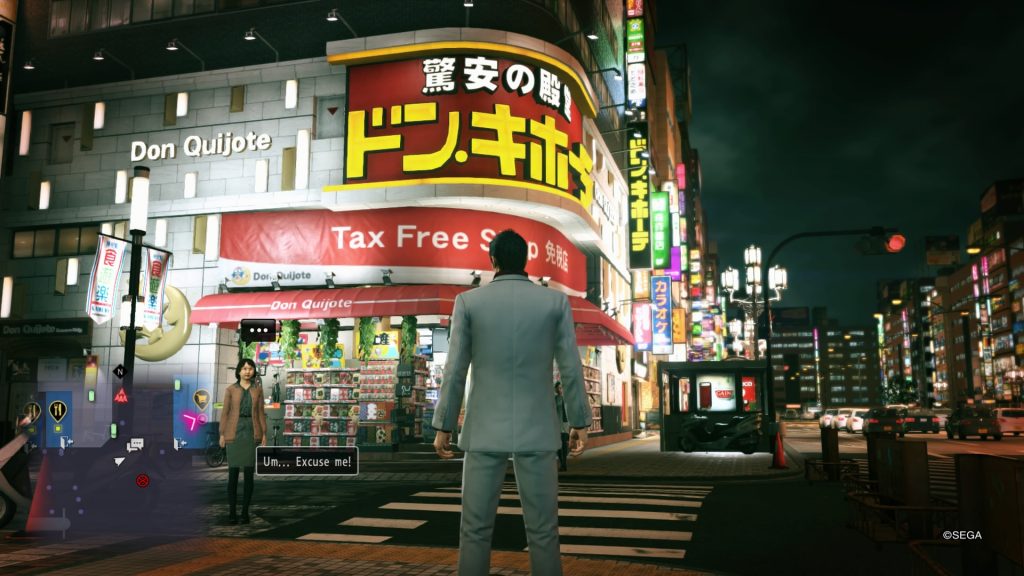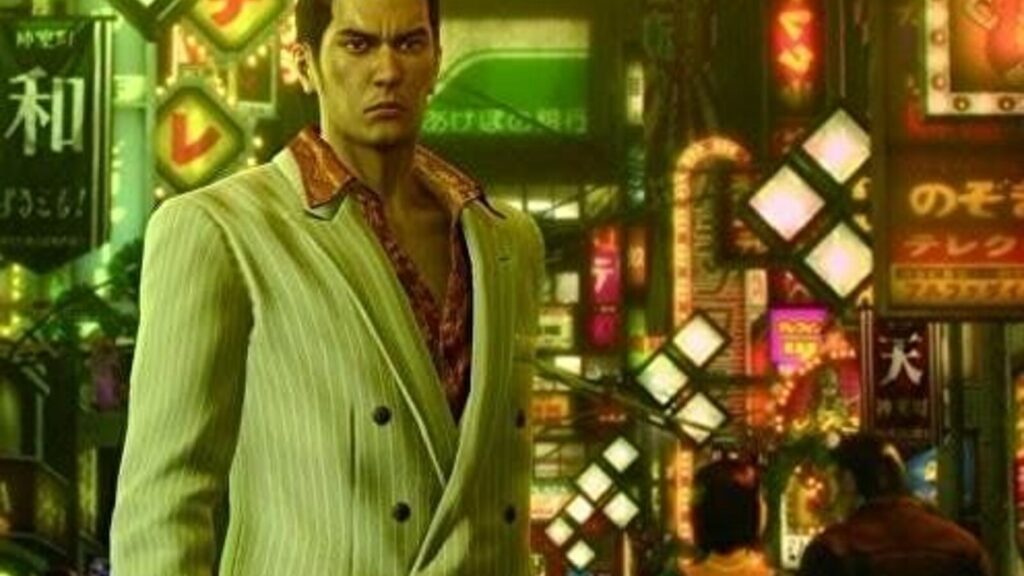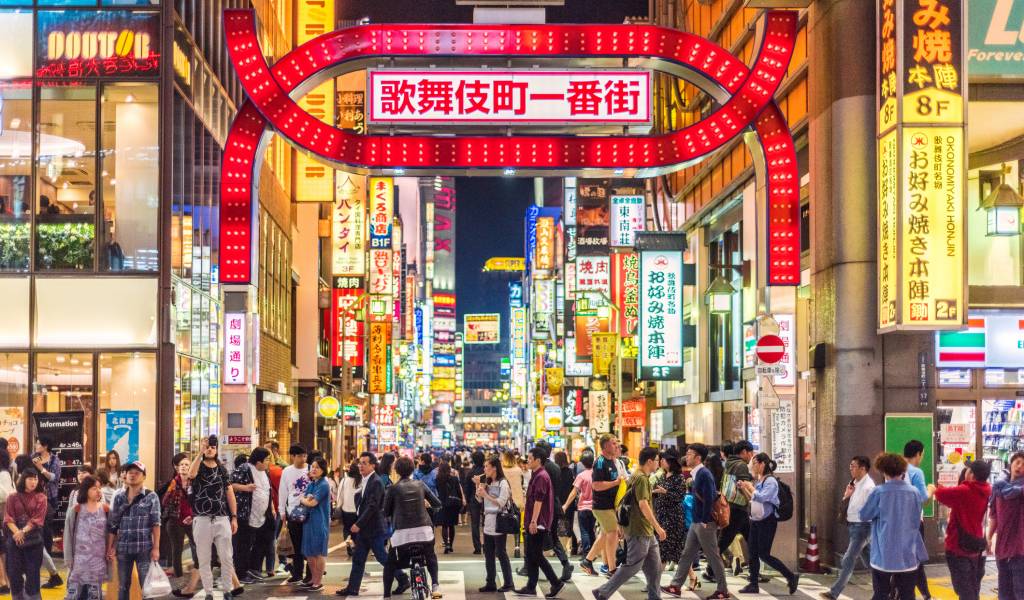The Japanese word yakuza is a blanket term for organized crime groups. In the popular video game series, Yakuza, players explore the fictional city of Kamurocho, which is based on a real district in Tokyo. The recent installment in the series was just released in 2018 and has already been highly successful. The video game world of Yakuza is heavily inspired by the real-life neighborhood of Kabukicho in Shinjuku.
Kabukicho is a nightlife district with a long history as an entertainment area for Tokyoites and tourists alike. In recent years, the neighborhood has gained notoriety for its connection to organized crime groups and its seedy side businesses. Learn more about this Tokyo spot that has inspired both the game developers and real-life yakuza gangs as you read our guide to Kabukicho and how it inspired Yakuza’s Kamurocho.
My déjà vu at Kabukicho

What makes Sega’s Yakuza games the undisputed rulers of the open world? A pinch of love, a dash of passion, and Kabukicho, the fascinating real-life equivalent.
As previously said by James Stephanie Sterling, the best showperson in games media, open worlds in this generation of video games have gotten bigger and broader, forsaking substance for scale.
However, the recent surge in popularity of Sega’s long-running Yakuza (Ryu ga Gotoku) franchise in the West has proved the value of a tight open world packed with compelling objectives, aesthetic elements, and, above all, personality. Charm in buckets and buckets.
Not long ago, I spent my morning playing one of the series’ best games, Yakuza Kiwami 2, and my afternoon shopping for books at Kinokuniya in Shinjuku.
I was struck by an intense sensation of déjà vu while there, as the digital worlds of Yakuza’s Kamurocho and Shinjuku’s ancient small town-within-a-town, Kabukicho, mingled weirdly in my imagination.
A quick snap of Kabukicho’s renowned neon red marquee is above, and our beloved Kiryu is below, posing beneath Kamurocho’s counterpart.
Kabukicho was most likely picked as the basis for the Yakuza series because of its recent history of active yakuza involvement in the district, as well as its overwhelming number of clubs, pubs, and restaurants.
Kabukicho embodies contemporary Tokyo. It’s chaotic and energetic, and it’s constantly overrun by visitors, intoxicated salarymen, and Tokyo’s most eccentric and odd residents.
For our British readers, the closest sibling would be London’s fantastic Camden Town.
Sega has accomplished the near-impossible job of recreating the pulsing pulse of the vivid and colorful Kabukicho into their popular franchise with painstaking attention to detail, meticulous reproduction of streets and lanes, businesses and subway entrances, posters and shop signs.
And the love that has gone into this is evident in every nook and corner.
The crew at Sega has even reproduced the metro exits and Japan’s iconic anxiety-inducing shop, Don Quijote.
Yakuza Zero has become an obsession of mine since it was panned by critics across the board last year.
Playing each new Yakuza game has given me more unrestrained delight and excitement than I’ve had from a video game series since the first time I died in Dark Souls.
Yakuza is a significant series. It is a labor of love and care. It’s also a lesson for many American and European game creators who, tragically, continue to get it wrong about what makes a ‘open world’ succeed.
A map clogged with meaningless busywork and useless trinkets; an universe that stretches beyond the horizon but without anything exciting to do or memorable to see; these are hardly the ingredients for a great game.
Kamurocho is a cluster of city blocks, not a sprawling landscape. And in any of them, a player can immerse himself or herself for hours.
Those hours could be spent on weird, one-of-a-kind, and fascinating side tasks.
They could be seconds that the user doesn’t even notice have passed since they were so engrossed in marveling at the subtle distractions that Sega has inserted.
Puddles that reflect neon signs; businesses and restaurants that can be visited and exited with ease, with NPCs emotively exclaiming, ‘Irashaimase!’ every time Kiryu sits or browses the shelves.
Kiryu now walks through the streets as the default, inviting the player to slow down and take it all in after switching to a new and more gorgeous engine. ‘Isn’t it lovely?’ Sega inquires. Yes, Sega, that is true.
Kabukicho: The Real-life Inspiration for Yakuza’s Kamurocho

The fictional city of Kamurocho in the video game series Yakuza is based on the real-life neighborhood of Kabukicho in Shinjuku. Kabukicho is a district in the Shinjuku ward that has been an entertainment area for centuries. It gained notoriety when red-light districts and seedy bars began to spring up along its streets in the 1960s and 1970s. In recent years, it has become known as a nexus for organized crime groups due to its gambling parlors and underground casinos.
The real-life Kabukicho is a large neighborhood with a high concentration of restaurants, bars, nightlife establishments, and adult entertainment venues. It has a reputation as a tourist destination and is known for being one of the last neighborhoods where children can still run around freely due to its relatively relaxed parenting culture. The area has become increasingly gentrified over the years as new high-rise condominiums and office buildings have been built and large corporations have moved in.
In the Yakuza video games, players explore the fictional Kamurocho district as Kazuma Kiryu, who is an ex-yakuza gang member who has been recently released from prison. He returns home to find his surrogate family splintered by betrayal and must find ways to pick up the pieces in order to restore his honor.
The ’80s: A Decade of Change for Nightlife in Japan

In the 1980s, Japan entered a period of economic growth and change that influenced its culture and nightlife. The country had recently become a member of the G7 nations, and its economy was on the rise. Many Japanese people were becoming wealthier and more interested in worldly (and Western) entertainment.
In the ’80s, the Kabukicho area in Shinjuku was home to many businesses that catered to this new wave of interest in nightlife. Some of these operations were legitimate, but others took advantage of the demand for adult entertainment to open up adult-only clubs and bars.
By the end of the ’80s, Kabukicho had become home to hundreds of clubs and bars, including many hostess clubs (similar to topless bars) that employed female servers dressed in provocative outfits. The area attracted a more adult crowd at night than during the day, and it gained a reputation as an unruly place filled with shady characters.
The economic bubble burst in Japan at the end of the ’80s, putting an end to its decade of change. But Kabukicho was left with a reputation as a red light district with seedy businesses operated by organized crime groups.
Shinjuku: Kabukicho’s Parent District
Kabukicho is part of the Shinjuku ward, which is one of Tokyo’s 23 wards. Located on the east side of central Tokyo, Shinjuku is made up of several districts, including Kabukicho, which was originally established as an entertainment district by a town planner in the late 1800s. It wasn’t until after World War II that it began to take shape as the entertainment and red light district we know today.
After the war, it became known as a place where American soldiers went to drink and party. Eventually, prostitution and other illegal activities became commonplace. The area has seen both highs and lows over the years but today can be considered a bit tamer than it was in its heyday.
In recent years, Kabukicho has been featured in several documentaries that shine a light on the yakuza (organized crime) groups that operate in the neighborhood. One of the most well-known documentaries is titled Kamurocho: The Hidden Side of a Secret Spot and looks at how organized crime has influenced this Tokyo district.
What Goes on in Kabukicho?
Kabukicho is one of the major entertainment districts in Tokyo and has been for many years. It is a place where you can go to have fun at all hours of the day and night. It is also a place where you can find a variety of less-than-legal services, including prostitution and gambling.
In recent years, Kabukicho has received a lot of negative attention due to its ties with organized crime. The area has been a haven for gangsters since the Edo period and it remains so today. The infamous yakuza group, the yamaguchi-gumi, was based in Kabukicho until 1992 when they moved their headquarters to the Kansai region. Still, many of Japan’s largest organized crime groups have bases in Kabukicho, including the largest yakuza group, the Inagawa-kai.
The gaming world has been fascinated with Kabukicho for years, with one popular setting being the video game series Yakuza. One installment in particular, Yakuza 6: The Song of Life, is heavily inspired by Kabukicho and its characteristics as a nightlife district.
Kamurocho vs. Kabukicho: Which Is the Real Yakuza City?
The fictional city of Kamurocho was created by video game developer Sega to inspire its fictional city of the same name in the Yakuza series. The city is modeled after the real-life neighborhood of Kabukicho in Shinjuku and has been used as a setting for the first four games in the series. In Yakuza 0 and Yakuza Kiwami, the players travel to Kamurocho but explore other areas eventually.
Kabukicho is a real entertainment district that has long been popular with Tokyoites. However, it has gained notoriety for its connection to organized crime groups and seedy businesses that are fronts for their activities. In recent years, several reports have revealed that many of these businesses are run by yakuza gangs.
In comparison with the real-life neighborhood of Kabukicho, Kamurocho is heavily inspired by it. The fictional district shares many of the features of Kabukicho including its red light district, restaurants, and sports bars among others. In addition, many establishments in Kamurocho are named after real-life Kabukicho establishments including Don Quijote, Sunshine City, and Koma Sushi among others.
Why Does the Yakuza Love Kabukicho So Much?
Yakuza has been in the news lately because of the upcoming release of Yakuza 6, which is a prequel that takes players back to the 1980s. The game is set in Kamurocho, which is based on the real neighborhood of Kabukicho in Tokyo. Because of this connection to Kabukicho, one question that has come up is why the game developers chose this particular area of Tokyo as the setting for their fictional city.
The answer is quite simple: Kabukicho is a perfect place for a video game location because it has all of the right ingredients. It’s been around for a long time and has a rich history. It’s also very popular with tourists because it’s an interesting area with lots to see. Most importantly, however, it has a dark side that has been exposed over the years by the police and media.
In recent years, Kabukicho has gained notoriety for its connection to organized crime groups and its seedy side businesses. There are numerous hostess clubs in the area, for example, where women provide company for clients. These clubs have made headlines for allegedly being fronts for prostitution rings and money laundering operations. In response to this negative publicity, some of these clubs have begun operating as “host bars” instead—a change that may not make much difference to yakuzas looking for hidden places to conduct their business dealings in private.
A Look Inside Tokyo’s Other Red-Light Districts
In addition to Kabukicho in Shinjuku, there are also other red-light districts in Tokyo where you can find establishments offering adult services. One of these is the Shibuya area, which has a reputation for the number of host and hostess clubs located there. Another neighborhood where you’ll find a red-light district is Akihabara, which has recently gained more popularity for its maid cafes and cosplay restaurants.
In Kabukicho, you can find several spots with neon signs advertising massage parlors or erotic massage services. In addition to these services, there are also “soap lands” that offer sexual services and hostess bars with waitresses who will go home with customers after work.
You may be surprised to learn that prostitution is not illegal in Japan. However, the laws do put certain regulations in place. For example, establishments that offer sexual services must register with the government and comply with licensing requirements. While prostitution itself is legal, soliciting sex or engaging in pimping is not allowed.
Final thoughts
Kabukicho, Tokyo is a bustling city by day and a vibrant entertainment district by night. It is a unique place that has served as the inspiration for Yakuza’s Kamurocho. The similarities between the two locations are striking, and it’s no wonder that Kamurocho has become so popular with fans of the Yakuza series. Not only is Kabukicho an interesting place to explore, but it also provides insight into the history of Japan and its culture.
While in Kabukicho, visitors can experience the hustle and bustle of Tokyo, as well as its unique charm. Whether you’re looking for a fun night out or an authentic slice of Japanese life, Kabukicho is sure to provide. It’s no surprise that this vibrant city serves as the real-life inspiration for Yakuza’s Kamurocho.